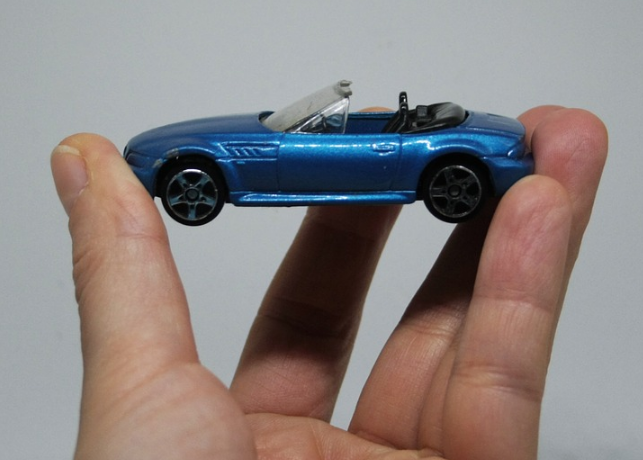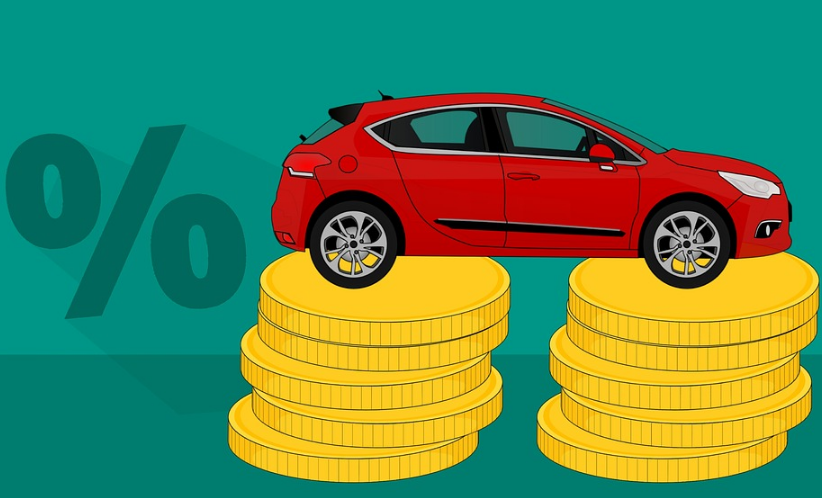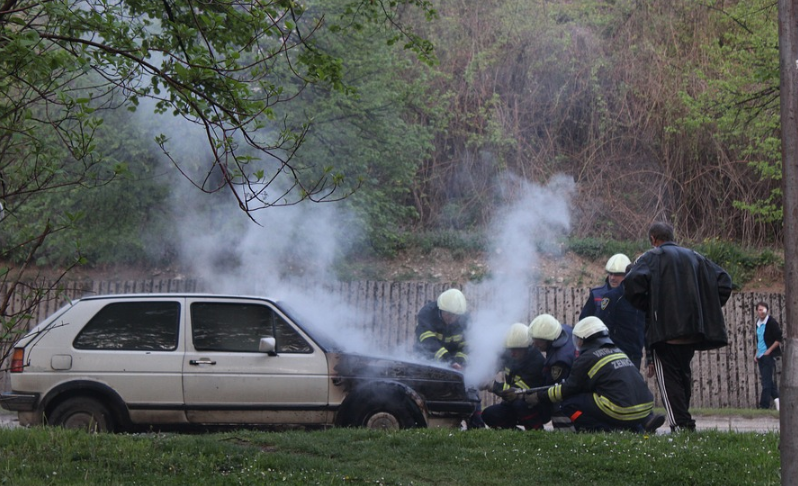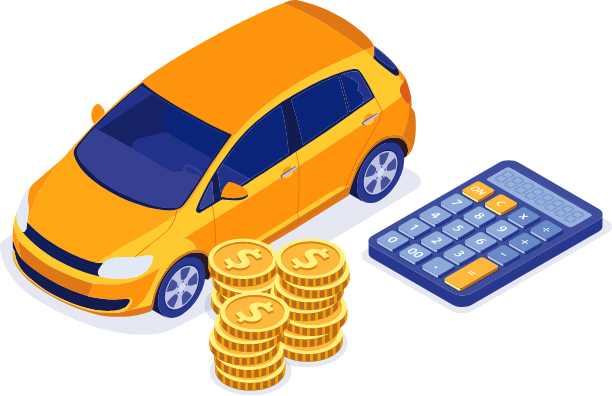What is auto insurance?
What We'll Cover
Owning a car involves several risks. When a car accident occurs, people may be injured and vehicles (or other property) may be damaged. Damage can also occur through theft, vandalism, or natural disasters. Auto insurance can protect you against these risks. Insurance companies provide auto insurance through personal auto policies (PAPs). A PAP is a contract between you and your insurer, specifying each party’s rights and obligations. Essentially, your insurer promises to provide specific coverage for you in return for your payment of a premium.
Why do you need it?
All states require you to be financially responsible when driving a car. Depending on your state, you may be required to purchase auto insurance or post a bond. State law (and/or your lender) often requires you to purchase at least a minimum amount of auto insurance. You may find it prudent to purchase greater coverage, however, in order to protect your auto investment, pay for necessary medical expenses, cover your legal liability, and cover any additional losses related to driving. Consider the following: if you cause an accident and the other driver suffers damages over and above your insurance limits, your personal assets and future earnings may be put at risk.
What do you need to know?
First of all, you need to know how to read and understand an auto insurance policy. Next, you’ll want to balance cost against desired coverage. Finally, you should evaluate and compare the various car insurance products to ensure that you get the best deal possible.
-
Understanding your PAP
Your policy is broken into sections. It discusses types of coverage, rights, and obligations under the policy, and exclusions or limitations. Types of coverage include liability coverage (injuries/damage you cause to other people and other property), medical payments coverage (medical expenses that will be paid--up to a specified limit--regardless of fault), uninsured/underinsured motorist coverage (losses caused by a driver who is uninsured or has inadequate insurance), and coverage for damage to your auto (accident damage and other damage or loss). -
What is a deductible?
Regarding damage to your own auto, collision and comprehensive coverages may each include a deductible. A deductible is basically a risk that is self-insured. It’s an amount of money that you are required to pay before your insurance kicks in. Deductibles can come in any dollar amount, but are generally $100, $250, $500, or $1000. -
Coverage vs. cost
You need to balance coverage against cost. Choosing the appropriate level of coverage depends on a number of factors, including the value of your vehicle, the value of assets you must protect, the amount of money you can afford to pay out-of-pocket, and your tolerance for risk. If a claim against you exceeds your coverage limits, you will be personally responsible for the amount that exceeds the coverage. Your insurance agent can tailor the policy to your needs. To arrive at the cost of your premium, your insurer will consider the coverage levels you select and will use statistical information about you and your car. There are several ways to reduce the cost of your premium. -
Evaluating and comparing coverages
Before purchasing auto insurance, you should evaluate and compare the various products offered to ensure that you get the best deal possible. Compare policies in terms of price, coverage, exclusions, and reputation of insurer. Shop around for different quotes, but make sure you are comparing similar policies. Also, weigh the policy cost against both coverage and quality of service provided.
When to get it
You may need to purchase auto insurance whenever you buy a new or used car. You may also need to reconsider your present policy if your family situation changes. Because marital status, number of children, and asset levels may change over time, you should review existing policies from time to time to ensure adequate coverage.
Common Auto Insurance Coverages

While the particular amounts and range of coverage differ from policy to policy, almost all insurance companies provide auto insurance through what’s known as a personal automobile policy (PAP). The discussion that follows briefly explains the components of the PAP, as well as the persons and events typically covered under such a policy.
Anatomy of the personal automobile policy (PAP)
Declarations page: Your PAP is a written contract between you and your insurance company. The policy’s declarations page contains factual information concerning you (as the owner of the policy), the vehicles covered by the policy, and other identifying features.
Part A--liability coverage: Liability coverage insures you against injuries you cause to other people and damage you cause to other people’s property in an automobile accident. Liability claims for pain and suffering can be virtually limitless, so this is one area in which you definitely do not want to be underinsured. The PAP separates liability coverage into two parts: bodily injury coverage and property damage coverage.
Part B--medical payments coverage: Medical payments coverage (med pay) pays medical expenses resulting from an automobile accident up to a specified dollar limit. The purpose of “med pay” is to provide payment for immediate medical treatment for passengers of your car who are injured in an auto accident. This way, there’s no need to wait and find out who is at fault and ultimately liable.
Part C--uninsured/underinsured motorist coverage: This coverage insures you against losses caused by someone who is completely uninsured or who has less than adequate insurance to cover the loss (underinsured).
Part D--coverage for damage to your auto: Part D coverage actually consists of two separate parts: collision coverage and comprehensive coverage. You can purchase either or both of these coverages for each vehicle you own. In general, collision coverage insures you against damage to your vehicle caused in an accident. Comprehensive coverage insures you against all other physical damage to your car caused by such events as fire, theft, flood, and vandalism. These coverages can be written with or without a deductible (generally, anywhere from $100 to $1,000). The higher the deductible, the lower the premium, and vice-versa.
Part E--duties after an accident or loss: This part of the PAP deals with the specific procedures that you must follow in order to have your claim covered by the insurer. It contains a list of general and specific duties that you must comply with. It’s essential to follow these procedures carefully, since payment of your claim may depend on your doing so.
Part F--personal auto policy provision: Part F of the PAP contains various provisions that limit and qualify the coverage provided in other sections of the PAP. Such provisions are commonly referred to as disclaimers. If the conditions set forth in this section are not met, the insurer may be able to deny coverage of your claims.
In addition to these basic parts included in every policy, there are certain optional coverages which can be purchased at an additional cost.
What’s not covered
Exclusions: Your PAP identifies a number of events and situations that are specifically omitted or excepted from coverage. These are called exclusions. An example would be property damage and personal injury that you intentionally caused, or damage to a vehicle from normal wear and tear or mechanical breakdown.
Limitations: Your PAP also specifies certain caps on the dollar amounts of coverage you are entitled to receive under the policy. These are called limitations. Separate limits are generally set for liability, medical payments, uninsured motorists, collision, and comprehensive coverages.
It’s important to read your PAP so that you’re aware of all the applicable exclusions and limitations.
Individuals typically covered under a PAP
Named insured: One section of the declarations page identifies you as the named insured, meaning you are the individual who is primarily insured under the policy. As the named insured, you and your vehicles receive the most extensive coverage under your policy.
Spouses: Your spouse is generally entitled to receive the same coverage as you (the named insured) under your policy if he or she lives with you, even if he or she is not identified as a named insured on the declarations page of your policy.
Family members: Family members (as defined in your policy) are insured by your PAP as long as they own, use, or maintain the vehicle covered by the policy. In fact, family members generally receive almost the same extensive coverage that you do.
Other people: If your covered auto is involved in an accident, other people are insured under certain sections of the policy if: 1) they were using the covered auto (liability coverage), 2) they were occupying the covered auto (uninsured motorists and medical payments coverages), 3) they are legally responsible for the actions of any other person insured under the policy (liability coverage), or 4) they are entitled to recover due to any bodily injury suffered by you, your resident spouse, family member, or anyone using the covered auto (uninsured motorists coverage).
If a vehicle other than a covered auto is involved, other people are insured under your policy as long as: 1) they are not the vehicle’s owner and they are legally responsible for the actions of any other person insured under the policy (liability coverage), or 2) they are entitled to recover due to any bodily injury suffered by you, your resident spouse, or relative (uninsured motorists coverage).
Policy Options

The coverage that your personal auto policy (PAP) provides can be tailored to your specific needs. Aside from any required minimum coverages that may apply (and subject to financial constraints), you can select the coverages and amounts you’d like. In addition to the various coverage options, there are also general policy options. Within certain parameters, you can make decisions here as well.
Choosing the policy period
Your PAP is only in effect during the policy period. This period of time is determined when you enter into the contract with the insurer. Typically, auto policies are in effect for one year. You may also be able to purchase auto insurance for longer or shorter periods of time.
Generally speaking, your premiums should be slightly lower when you purchase a policy with a longer period. With longer policies, the insurer can spread out the administrative costs of writing the policy over a longer period of time.
Canceling the policy
You can cancel your PAP at any time before the expiration date of the policy. Most insurers have procedures that you must follow in order to do so. When you cancel before the end of the policy there may be a penalty, but not all auto insurers penalize you for early cancellation. Check with your insurer for more information.
Paying your premium
Most insurers give you three options for paying your insurance premium:
- Pay the entire annual premium up front,
- Make a down payment on the premium (typically 30 percent) and then divide the remainder into monthly installments, or
- Pay an equal monthly amount for 10 or 12 months.
Each method has pros and cons. Paying the entire amount up front might be financially impossible for you. A payment plan can be good, but some insurers will charge you interest or a service fee in order to do so. Check with your insurer to see when and if they charge interest or fees for a payment plan.
Towing and labor coverage
Optional towing and labor insurance provides coverage for emergency road service and towing. Under this coverage, the insurer will pay towing and labor costs incurred each time your “covered auto” or any “non-owned auto” is disabled, up to the policy limit. This coverage is available any time your vehicle breaks down and is not limited to accidents covered under your physical damage coverage.
The insurer will only pay for labor (such as changing a tire or jump-starting your car) performed at the place where your vehicle is disabled, not the repair work done at a service station.
- Covered auto: This term includes all vehicles listed on the Declarations page of your policy. It also includes any passenger vehicles that you purchase during the policy period, assuming you give notice to your insurer within 30 days after you become the owner.
- Non-owned auto: A non-owned auto is a vehicle that either you borrow or use as a substitute for your “covered auto.” A borrowed vehicle is covered as long as it is not furnished or available for your regular use. (If a vehicle is furnished for your regular use, you should be listed on that owner’s policy.) Substitute vehicles are covered when your “covered auto” is out of normal use because of breakdown, repair, servicing, loss, or destruction.
Transportation expense (rental) coverage
This optional coverage pays a set amount per day for transportation expenses (including a rental car) if your car is being repaired because of an accident. This coverage is often limited to $15 per day, up to a maximum of $450. For an additional premium, the per--day and maximum limits can be increased.
The coverage applies only if your vehicle is unusable for more than 24 hours. The payment is further limited to the period of time reasonably required to repair your vehicle.
In order for the rental benefit to take effect, the theft or accident has to be one that is covered under the physical damage section of your policy. This coverage may or may not apply to stolen vehicles. Check with your insurer.
No-Fault Insurance

In most states, auto insurance functions under a traditional fault-based system. Insurance companies make payments based on each person’s degree of fault in a particular motor vehicle accident. However, long and costly court battles are often required to determine who is at fault in many accidents. In an attempt to reduce this problem, thirteen states have adopted an alternative no-fault system of insurance. These “no-fault” states include Colorado, Florida, Hawaii, Kansas, Kentucky, Massachusetts, Michigan, Minnesota, New Jersey, New York, North Dakota, Pennsylvania, and Utah.
When you have an accident under a no-fault system, your insurer automatically pays for your damages, regardless of fault (up to the specified policy limit). In exchange for this guaranteed payment, you must give up some of your rights to sue the other driver involved in the accident. There are elements of no-fault in all auto insurance coverage. For example, medical payments and property damage are typically paid regardless of fault.
No-fault insurance is intended to reduce auto insurance premiums by reducing the number of automobile accident cases in the courts, by restricting recovery for pain and suffering damages, and by providing limited payment for losses.
Pure no-fault vs. modified no-fault
Under a pure no-fault system, your insurer would pay for any economic damages (such as medical bills, lost wages, etc.) up to the policy limit, and you would be completely prohibited from suing a negligent driver for “non-economic” damages (such as pain and suffering, loss of companionship, etc.). Presently, no states function under a pure no-fault system.
Instead, all thirteen no-fault states have adopted a modified no-fault system. This means that your insurer still pays for your economic damages up to the policy limit, but you may be allowed to sue for non-economic damages if the amount of these damages exceeds a specified tort threshold. The threshold can be either verbal or monetary (or a combination), and is designed to limit lawsuits to only the more serious injuries.
- Verbal threshold: In states that have a verbal threshold, lawsuits for non-economic injuries are limited to “serious” injuries or death. Serious is defined differently in each state, but it often includes broken bones, severed limbs, etc. Unless you meet the defined criteria for a “serious” injury, you are precluded from bringing a lawsuit against the other driver. Drawback: you may sustain a very serious injury that is not included in the defined verbal threshold.
- Monetary threshold: In states that have a monetary threshold, lawsuits for non-economic injuries are precluded unless a certain dollar amount in medical bills is reached. Pure no-fault supporters fear that people will make unnecessary visits to their medical provider in order to reach the threshold.
Benefits of a no-fault system
Supporters of no-fault insurance argue that a no-fault system offers many benefits, including the following:
- Quicker payment of claims by eliminating costly and time-consuming litigation over liability.
- No splitting of fees with lawyers.
- Lower insurance rates because expensive non-economic damage awards and legal fees required to defend liability claims are eliminated--legal fees currently account for 12% of premium costs.
- Reduction in the number of lawsuits.
- No subsidizing uninsured motorists; your insurer covers the cost of your medical bills.
- Lower rates mean that auto insurance is accessible to people of lesser means.
Drawbacks of a no-fault system
Opponents of no-fault insurance argue that the benefits are purely theoretical and that past performance has proved that no-fault is ineffective. Drawbacks include the following:
- No compensation for pain and suffering, paralysis, or other non-economic damages; arbitrary limits are imposed.
- Under pure no-fault and choice systems, bad drivers are protected because they cannot be sued for the damages they cause. Thus, there’s no incentive to be a good driver.
- Rates are actually higher under no-fault. Regardless of theory, insurance premiums in no-fault states are on average 25% higher than in traditional liability states.
- There is no reduction in litigation costs under a no-fault system. The time and effort insurers once spent defending litigation claims is now spent defending lawsuits brought by their own insureds for failure to pay no-fault benefits. In modified no-fault states, tremendous time and energy is spent litigating over whether or not the tort threshold requirement has been met.
- Even your economic damages are limited by the terms of the policy. In traditional tort states, you are fully compensated for your loss by suing the driver responsible for your injuries. No-fault states have limits on liability, even for your basic economic damages. These limits result in people being forced to pay for any unpaid medical bills without recourse against the driver who caused the injuries.
What is “choice no-fault?”
Choice is another hybrid of the pure no-fault system. It creates two classes of insured drivers by retaining parts of both the pure no-fault and traditional fault-based systems. Versions of choice no-fault have been implemented in Pennsylvania and New Jersey. It is also the plan proposed by the federal government in its Auto Choice Reform Bill.Under a choice system, drivers choose whether they want to be insured under a pure no-fault plan or retain some traditional tort rights similar to modified no-fault.
- If you choose the pure no-fault plan, you are unable to sue negligent drivers for non-economic damages, and you are immune from such suits yourself.
- If you choose to retain your traditional tort (personal injury suit) rights, you can sue other drivers who have also chosen to retain their tort rights, and in return they can sue you. Your traditional tort rights are not unlimited, however. If you have an accident with a driver who has opted for the pure no-fault option, you are unable to sue that driver.
By its design, choice no-fault tends to lead good drivers to pick the tort option (which is more expensive) and bad drivers to pick the pure no-fault option (which is less expensive). Critics charge that this unfairly punishes good drivers with higher rates and rewards bad drivers with no personal liability.
The responses below are not provided, commissioned, reviewed, approved, or otherwise endorsed by any financial entity or advertiser. It is not the advertiser’s responsibility to ensure all posts and/or questions are answered.







